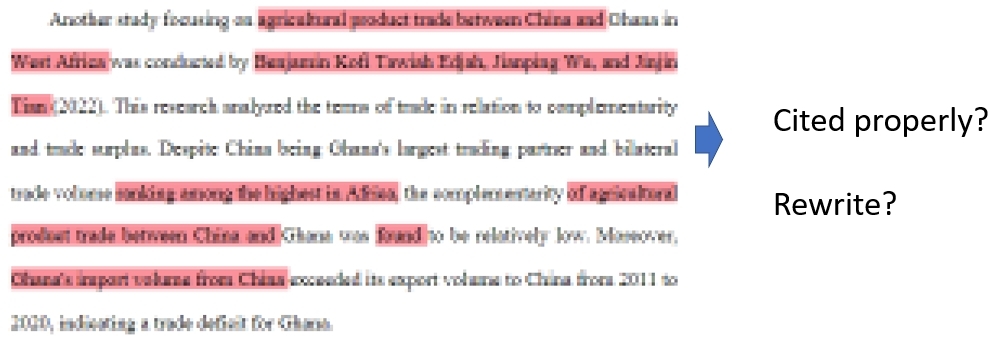
Turnitin Instructor Guide-Similarity report
Turnitin operating model
Instrucor self-submission paper check
(Choose one of the following choices)
What is the acceptable similarity percentage for a Turnitin similarity report?
Turnitin is a Similarity Check tool, and is not an absolute indicator of plagiarism.
A low similarity score does not confirm a lack of plagiarism.
-Turnitin has not included the bibliography
-Turnitin is unable to detect plagiarism in diagrams
-Materials originally published in foreign languages and translated by the student may not appear as plagiarised material.
-Citations are limited to published materials
-Turnitin is unable to detect plagiarism in diagrams
-Materials originally published in foreign languages and translated by the student may not appear as plagiarised material.
-Citations are limited to published materials
A high similarity score does not confirm the presence of plagiarism.
-Certain words and phrases, such as: proper nouns, common expressions, names of organizations, citation formats, and bibliographies may be mistaken for instances of plagiarism.
-Properly cited information may be mistaken for plagiarism.
-Comparison with the student’s own work, including work that has been uploaded for previous assignments or open access work published may be mistaken for plagiarism.
-Instructors can filter out these types of mistaken plagiarised work with the filter tool when viewing the originality report.
-Properly cited information may be mistaken for plagiarism.
-Comparison with the student’s own work, including work that has been uploaded for previous assignments or open access work published may be mistaken for plagiarism.
-Instructors can filter out these types of mistaken plagiarised work with the filter tool when viewing the originality report.
It's difficult to determine an acceptable similarity score, so it is recommended that instructors take note of all highlighted sections. In the sample below, for example, given the nature of the similarity checker algorithm, these small highlighted sections with suspected similarity cannot be avoided.

When dealing with a large highlighted section, has the section been cited properly with correct punctuation? Does the section need to be rewritten?
